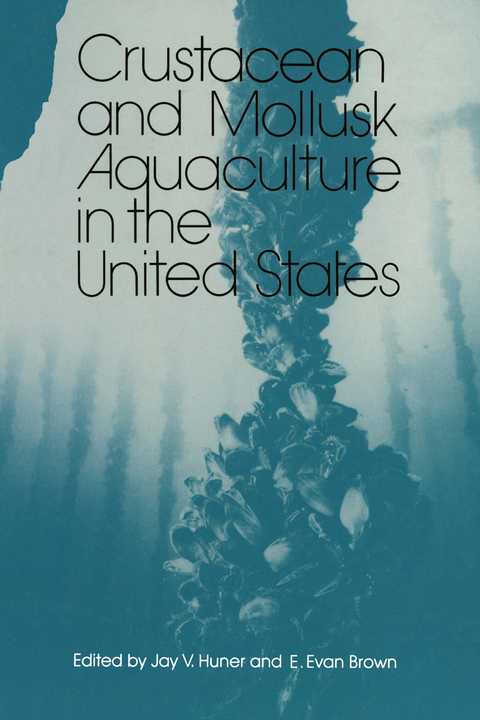
Crustacean and Mollusk Aquaculture in the United States
Springer-Verlag New York Inc.
978-1-4684-1505-6 (ISBN)
1 Crawfish Culture in the United States.- Species of Importance.- Basic Biology.- Diseases and Parasites.- Pond Culture.- Soft-Shelled Crawfish.- Intensive Crawfish Culture.- Status of Crawfish Culture.- Crawfish Processing.- Economics and Markets.- Summary.- Literature Cited.- 2 Freshwater Prawns.- Basic Biology.- Culture Techniques.- Diseases, Parasites, and Predators.- Constraints on Development of Prawn Farming.- Status of Culture in the United States.- Economic Overview and Outlook.- Literature Cited.- 3 Penaeid Shrimp Culture.- Species of Importance.- Basic Biology and Culture Requirements.- Culture Techniques.- Diseases and Parasites.- Status of Shrimp Farming in the United States.- Economic Overview and Outlook.- Literature Cited.- 4 Lobster Aquaculture.- General Biology—Selected Aspects.- Culture.- Diets for Larger Juveniles.- Diseases.- Site Selection and Design of Facilities.- Marketing and Associated Economics.- Future Prospects.- Literature Cited.- 5 Other Crustacean Species.- Blue Crab.- Cancer Crabs.- Spot Prawn.- Spiny Lobsters.- The Smaller Shrimps.- Literature Cited.- 6 Oyster Culture.- Natural History.- The American Oyster (Crassostrea virginica).- The Pacific Oyster (Crassostrea gigas).- The European Oyster (Ostrea edulis).- The Olympia Oyster (Ostrea lurida).- Oyster Hatcheries.- Problems Facing the Oyster Culture Industry.- Summary.- Literature Cited.- 7 Clam Aquaculture.- Clam Fisheries and Aquaculture Production.- Basic Biology.- Culture Techniques.- Parasites and Diseases.- Constraints.- Status and Economic Overview.- Summary.- Literature Cited.- 8 Mussel Aquaculture in the United States.- European Mussel Culture Technology.- Feasibility of European Culture Techniques in the United States.- Current Mussel Aquaculture Production.- RecentResearch Efforts.- Life Cycle of the Blue Mussel.- Experimental Culture—East Coast.- Experimental Culture—West Coast.- Presence of Pearls.- Predation, Parasitism, and Accumulation of Algal Biotoxins.- Mussel Culture in Heated Effluents.- Aquaculture Carrying-Capacity Model.- Economics.- Summary.- Literature Cited.- 9 Abalone: The Emerging Development of Commercial Cultivation in the United States.- Principal U.S. Species.- Biology.- Conventional Cultivation Technology.- Barriers to Efficient Production Using Conventional Technology.- Ocean Ranching.- Summary and Prospects for Future Industrial Development.- Literature Cited.- 10 Water Quality.- Physical Variables.- Chemical Variables.- Biological Variables.- Pesticides.- Water Analysis.- Literature Cited.- Appendix: The Brine Shrimp, Genus Artemia.
| Zusatzinfo | 476 p. |
|---|---|
| Verlagsort | New York, NY |
| Sprache | englisch |
| Maße | 152 x 229 mm |
| Themenwelt | Sachbuch/Ratgeber ► Natur / Technik ► Naturführer |
| Naturwissenschaften ► Biologie ► Limnologie / Meeresbiologie | |
| Naturwissenschaften ► Biologie ► Ökologie / Naturschutz | |
| Weitere Fachgebiete ► Land- / Forstwirtschaft / Fischerei | |
| ISBN-10 | 1-4684-1505-0 / 1468415050 |
| ISBN-13 | 978-1-4684-1505-6 / 9781468415056 |
| Zustand | Neuware |
| Haben Sie eine Frage zum Produkt? |
aus dem Bereich


